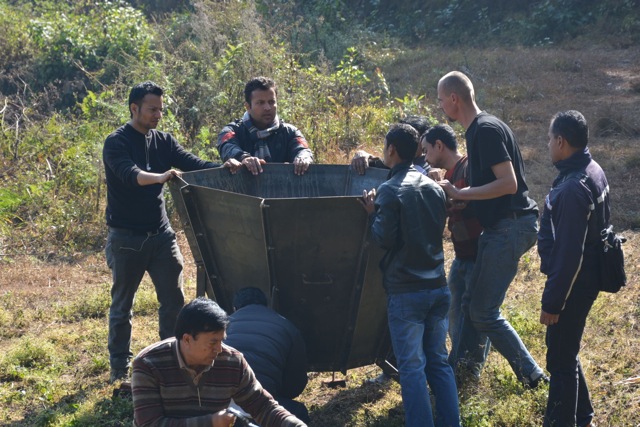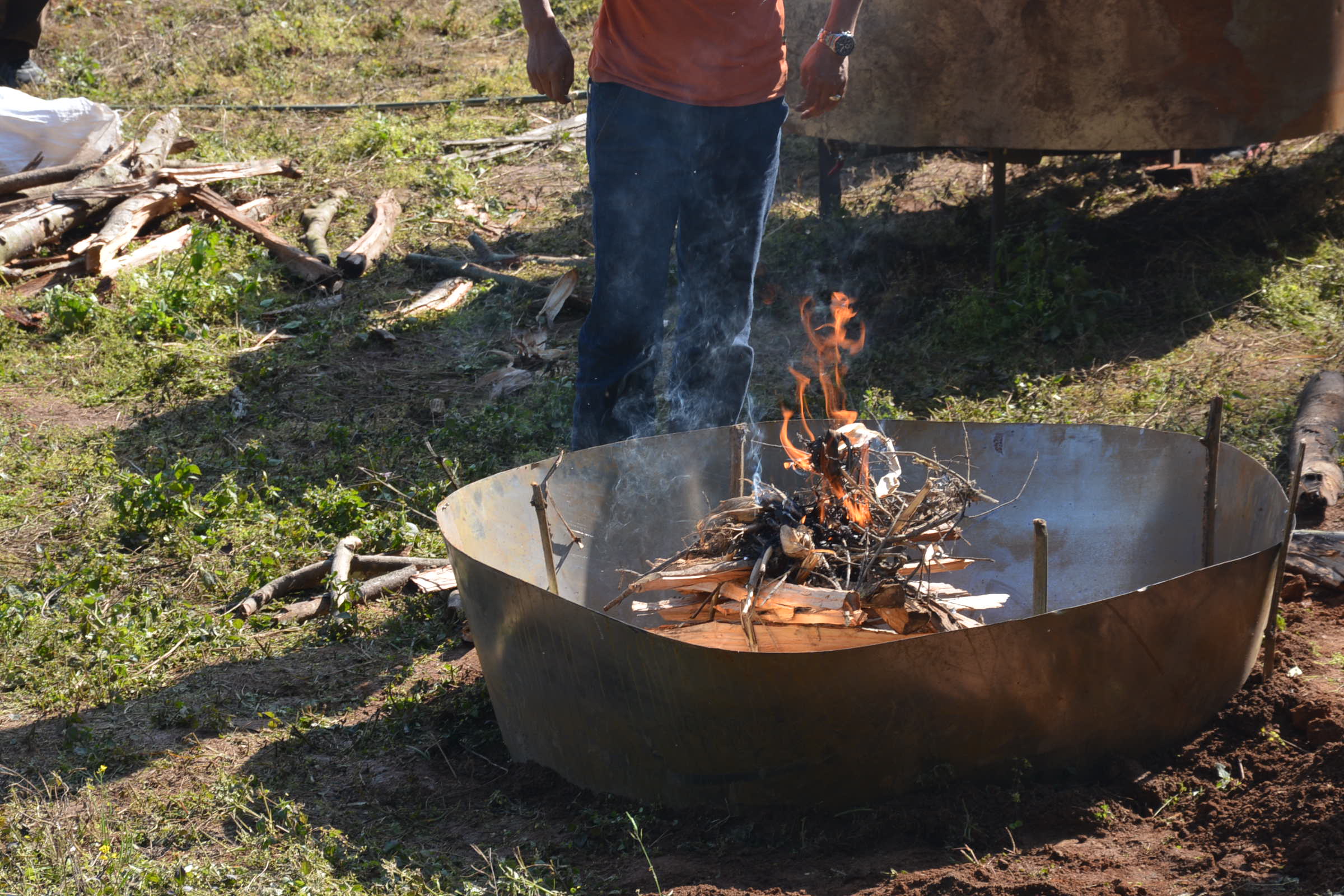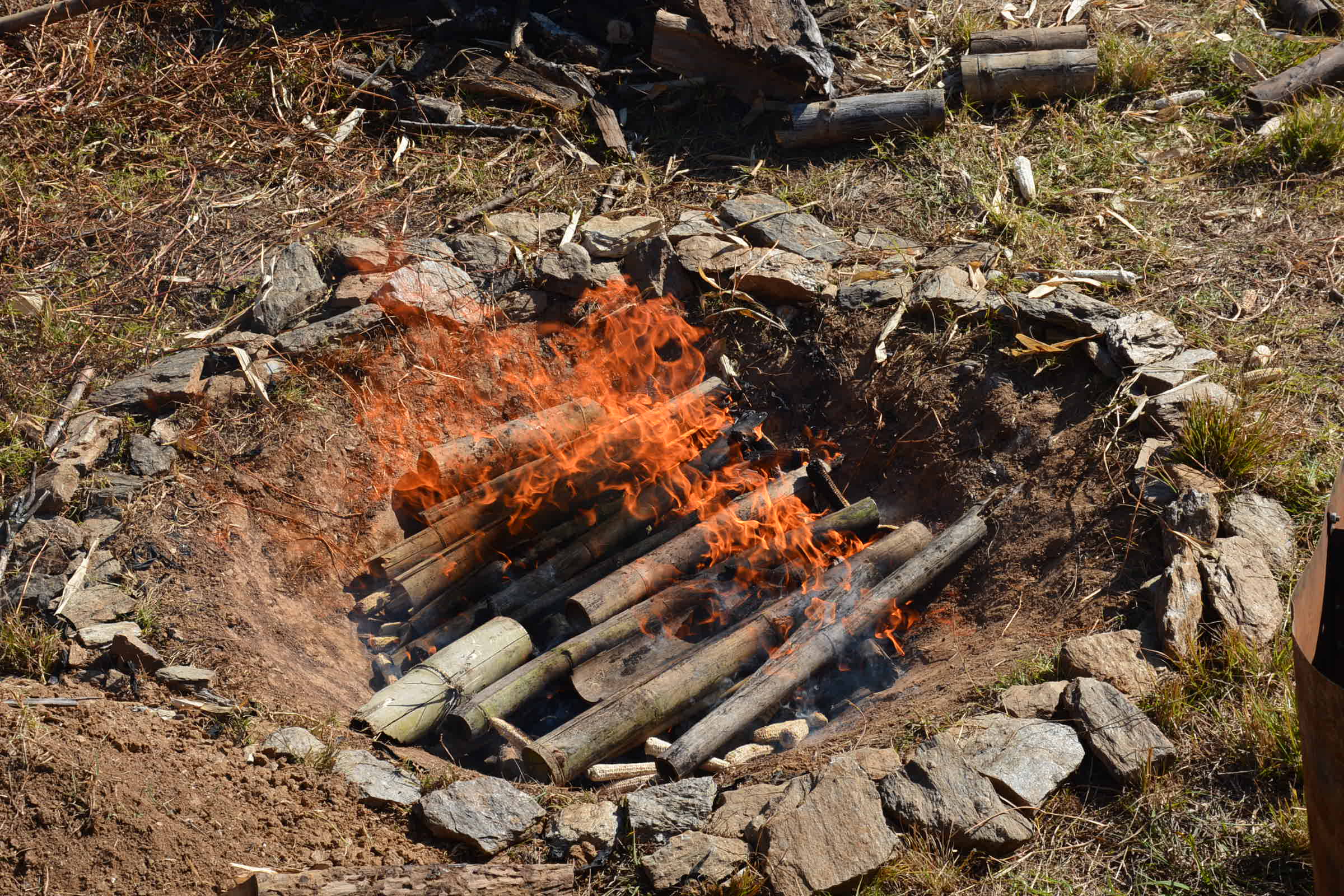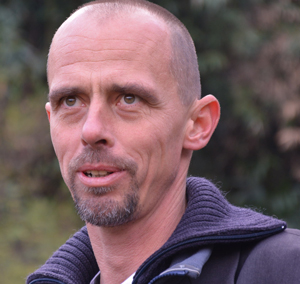The most challenging to build was the full-scale “flat pack” 1000 liter Kon-Tiki. As transportation to the mountain villages is difficult and welding an issue, we initially thought to build the Kon-Tiki in 12 pieces and assemble it on site with bolts and fire gasket between the plates. However, we learned that bending 3 mm steel and cutting with 0.2 mm precision is more of an issue than welding. Though the unequaled craftsmanship of the local metal workers overcame all obstacles and finished in time their masterpiece of 250 kg of steel, including the rim shield with hooks and bottom water drain, the next Kon-Tiki will still be octagonal but will be welded and not come as flat-pack.

The second kiln was much easier. We just cut and then bolted together a 0.8 mm truncated cone as upper part of a hybrid metal/soil-pit-kiln Kon-Tiki. We then dug a half meter deep cone in the loose clay soil and fixed the truncated metal cone above it. The third kiln was the easiest to build. It only took 45 min and a spade to dig a 1 m deep and 1.50m wide cone pit in the easy clay-rich soil.

As feedstock we used some wood to deliver pyrolysis energy, along with corn cobs and eupatorium bushes (an invasive species destroying forests and biodiversity here in the Himalayas and in many other places from Namibia to the Andes). Rain had wet our feedstocks and we needed a large amount of wood energy. But as wood is used for everyday cooking, firewood is never dried but cut and used it right away. The firewood bought from farmers in the village and brought on-site by fragile porter women had a humidity of 50% or more. Firing the kiln with these feedstocks was not easy but when done with care and a good hand for blending cobs, wood and brush, worked fine. However, every time the char-maker turned his or her back for a short while, kilns started to smoke, fire went down, char turned to ash, or feedstock was overloaded. Academics are no craftsmen and the locals don’t see yet any problem with some smoke as close to every rural kitchen is filled with much more smoke than this.

What became clear already after the first firing: More important than kiln technology is the care and diligence of the charmaker. And I am sorry to have not much hope be it here in Nepal or back home in Switzerland that the latter will be the case when farmers take over the biochar revolution. - Hans-Peter Schmidt


Real challence
The real challenge in promoting charring with this method (as well as in general) is the mind of the char maker. The one who has already taken charring as a profession and knows "everything" too often hesitates to learn it but sticks with his/her own ways. The one who doesn't know it yet but may be enthusiastic has great difficulties to understand the hard "musts" in this trade - and there are several critical factors. Especially persons, who have many things to do at the same time, like housewives/-husbands, have great problems to maintain 100% diligence all the time the process requires. In countries like Nepal where fuelwood is as valuable as gold in the high mountains, wasting it is almost a sin. Therefore, I suggest you to select very carefully the target groups, which can and want concentrate to the learning and applying this innovation. This is not for all people. Only devoted village professionals will succeed in using it and developing it further. Good luck in your noble efforts.